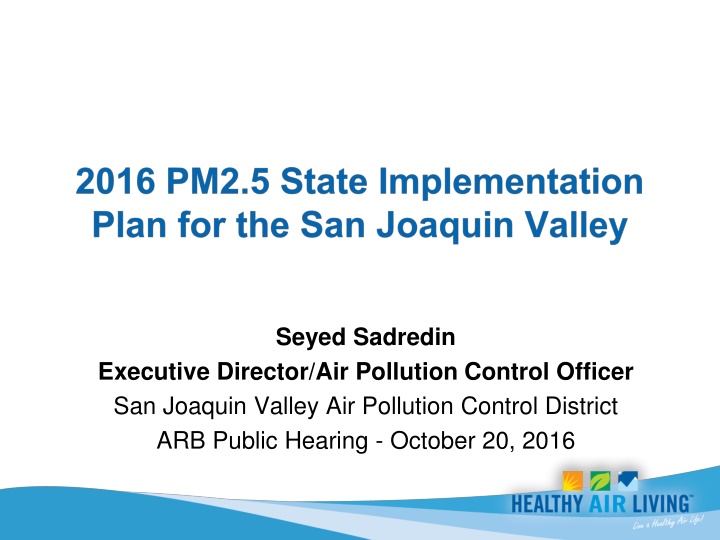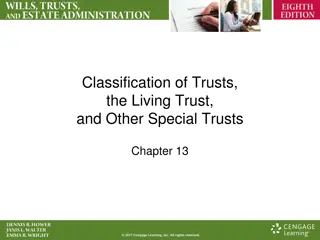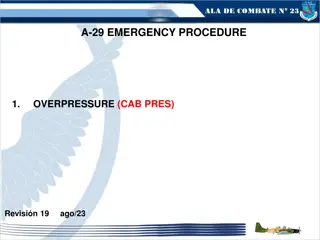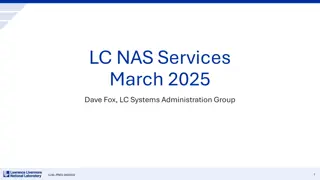
Challenges and Solutions for Air Pollution Control in San Joaquin Valley
Explore the obstacles faced by the San Joaquin Valley Air Pollution Control District in meeting air quality standards, including missed deadlines and required emission reductions. Discover the need for transformative measures and collaborative efforts to achieve public health goals under the Clean Air Act.
Download Presentation

Please find below an Image/Link to download the presentation.
The content on the website is provided AS IS for your information and personal use only. It may not be sold, licensed, or shared on other websites without obtaining consent from the author. If you encounter any issues during the download, it is possible that the publisher has removed the file from their server.
You are allowed to download the files provided on this website for personal or commercial use, subject to the condition that they are used lawfully. All files are the property of their respective owners.
The content on the website is provided AS IS for your information and personal use only. It may not be sold, licensed, or shared on other websites without obtaining consent from the author.
E N D
Presentation Transcript
Seyed Sadredin Executive Director/Air Pollution Control Officer San Joaquin Valley Air Pollution Control District ARB Public Hearing - October 20, 2016
1979 1-Hour Standard Just attained 1-hour standard 1997 84 ppb Standard On track to attain ahead of 2023 deadline 2008 75 ppb 8-Hour Standard Recently submitted plan to EPA showing attainment by 2031 2015 8-Hour 70 ppb Standard Attainment Deadline: 2037 Attainment plan due: 2020 Requires massive reductions in NOx 4
1997 Standard 24-hr (65 g/m3) - annual (15 g/m3) Missed attainment deadline of 2015 due to EPA inaction, must now submit a 5% Plan 2006 Standard 35 g/m 24-hr Attainment Deadline: 2019 plan due 2017 Attainment by deadline impossible Physically impossible given ARB on road/off road regulations not fully implemented until 2023 2012 Standard annual (12 g/m ) Attainment Deadline: 2021 can be extended to 2025 Attainment requires zero/near-zero emissions technology across all sources 5
Despite major reductions, impossible to attain new standards without transformative control measures Unlike ozone, PM2.5 attainment plans not able to rely on black box reductions from yet-to-be identified technologies Valley must reduce emissions by an additional 90% by 2025 to meet latest PM2.5 standards Need significant reductions from mobile sources District does not have authority to adopt tailpipe standards Responsibility of state and federal government New local, state and federal regulations coupled with robust incentive-based emission reduction strategy necessary to achieve public health goals under the Clean Air Act 7
Leave no stone unturned in identifying and promulgating additional stationary source controls Measures to reduce directly emitted PM2.5 Work with ARB and EPA to advance inventory, modeling, and innovative technologies Healthy Soil Initiative Enhanced Conservation Management Practices for agricultural operations Advanced controls for underfired charbroilers Enhanced and continued local revenues for incentive-based measures (DMV, ISR, mitigation agreements) 8
National standards for heavy duty engines Petitions by South Coast and San Joaquin (our petition asks for locomotive controls in addition to trucks) Funding for incentive-based control measures Significant reductions to continue to come from regulatory measures Attainment impossible without incentive-based measures Update federal policies to allow full utilization of incentive-based measures in SIPs 9
Renewed commitment to address criteria pollutants and toxic emissions in South Coast and San Joaquin Valley Need pollution reductions by 2025 (need specific strategy from ARB) NOx is the real super-pollutant Maximize co-benefits from climate change measures Do not add to NOx burden (e.g. oxidizing methane) Greater focus on reducing black carbon Don t go too far in relaxing state s portable engine controls 10
Continue to focus state funding in disadvantaged communities in nonattainment areas Work with South Coast, San Joaquin Valley, and other stakeholders to identify and procure new funding sources Continue to work with South Coast, San Joaquin Valley, and EPA on technology advancement Recognize Valley s need for near-zero emissions technologies (natural gas can serve as bridge to renewable gaseous fuels) 11





